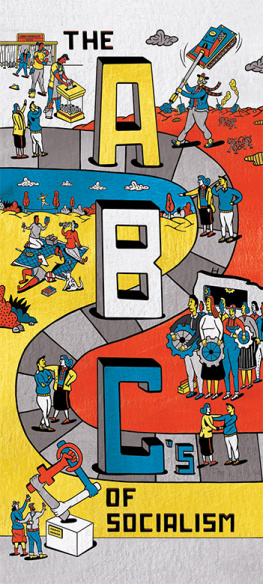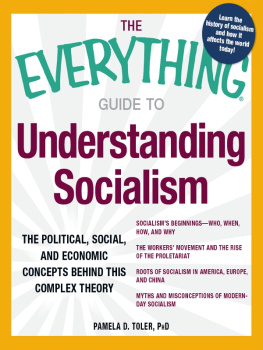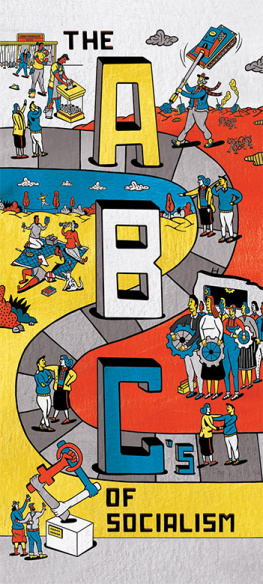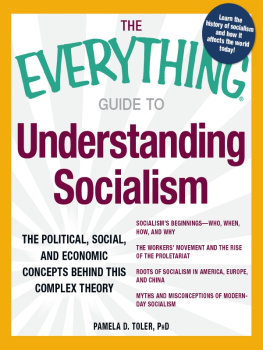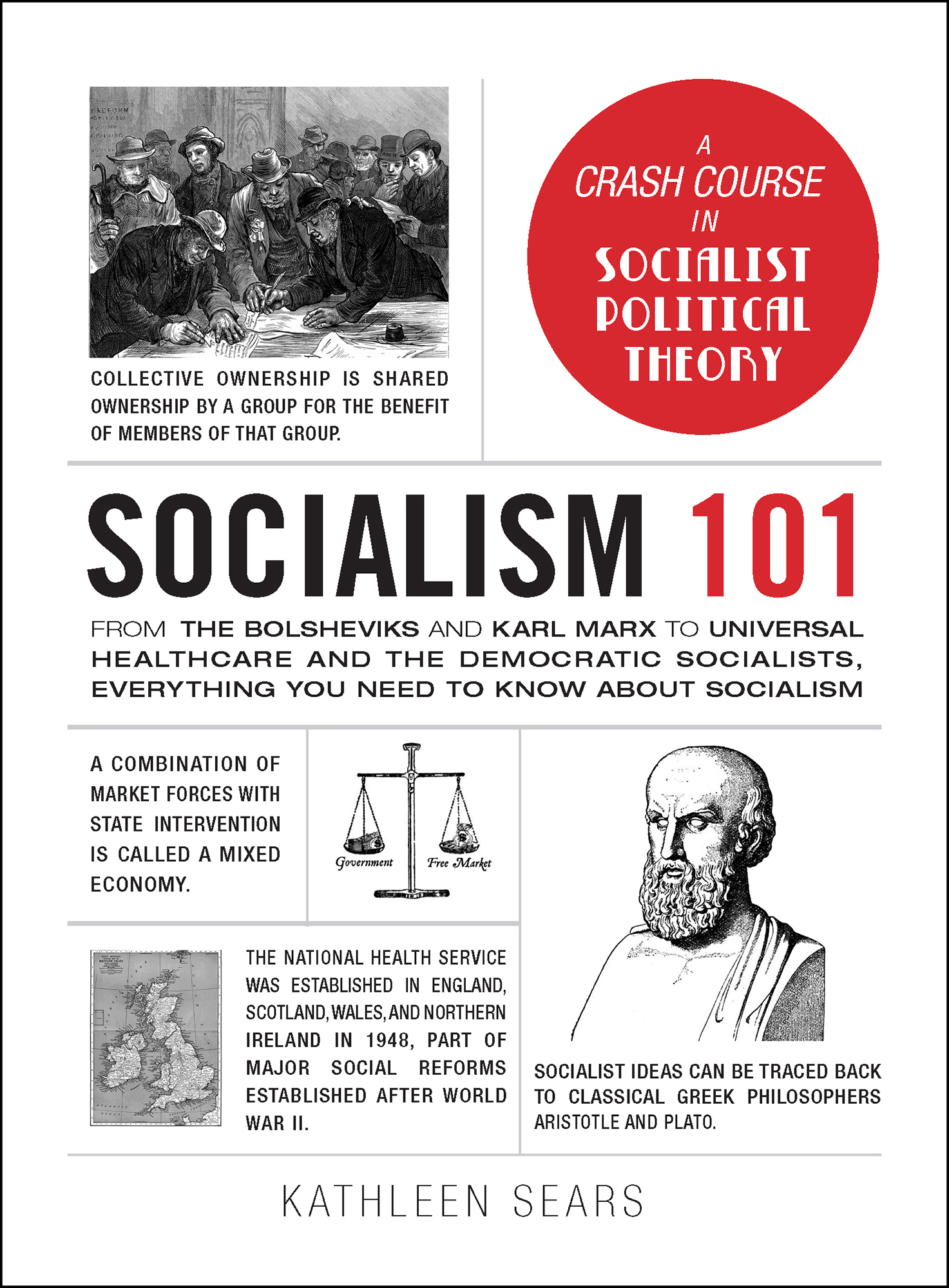Thank you for downloading this Simon & Schuster ebook.
Get a FREE ebook when you join our mailing list. Plus, get updates on new releases, deals, recommended reads, and more from Simon & Schuster. Click below to sign up and see terms and conditions.
CLICK HERE TO SIGN UP
Already a subscriber? Provide your email again so we can register this ebook and send you more of what you like to read. You will continue to receive exclusive offers in your inbox.
INTRODUCTION
Have you ever wondered just what people mean when they use the word socialism ? Are you curious about the different kinds of socialismfrom Marxism to democratic socialism to the British welfare state? Do you want to know the long tradition of socialist thought, in both Europe and America?
If so, Socialism 101 is for you. Here youll learn, in clear, simple language, where socialism started, how its changed over the years, and what it means today. Youll find entries that cover such topics as:
Who were Karl Marx and Friedrich Engels, founders of scientific socialism?
How did socialists, led by Vladimir Lenin, take power in Russia in 1917?
What does democratic socialism mean, and how is it different from Marxist socialism?
What do todays socialist politicians want?
Socialism has entered the political dialogue today, and its important to know more about it. Like many political terms, its heavily charged and often misunderstood. But increasingly voters are being given choices of electing socialist, or socialist-leaning, candidates. More and more people are open to socialism and want to understand it. Part of the problem is that a lot of people arent sure where to start. As with many things, its a good idea to begin by learning where socialism came from and what its creators were trying to say.
Some people think socialism is a recent creation. In fact, socialist ideas have been around for hundreds of years. Their roots lie back in the eighteenth century, when people first began to dispute the notion that kings had a right to rule them. Socialist thinking underwent a long evolution, stimulated by historic events, such as the European revolutions of 1848. These revolutions spurred two young men, Karl Marx and Friedrich Engels, to write a document titled The Communist Manifesto . Today the world is still feeling the effects of that little pamphlet.
All of this may sound a bit complicated, but this book will help you make sense of it. It gives you the historical background of where socialist ideas came from as well as clear, straightforward explanations of what the different types of socialists stood and stand for.
Socialism has had an impact on tens of millions of people over the years. Today its seeing a resurgence. So whether youre coming to this political and economic theory for the first time or you want to brush up on your existing knowledge, in these pages youll find helpful information to put socialism in its historical and political context. Now lets get started.
WHAT IS SOCIALISM?
Beginning with the Basics
It seems as if every day someone is denouncing (or sometimes complimenting) someone else with the label of socialist . Yet these people often believe completely different things. Surely they cant all be socialists, can they?
Clearly, the word socialism means different things to different people. The definition of socialism has been stretched very far, but it usually includes a few core beliefs.
CAPITALISM VERSUS SOCIALISM
Socialism is an economic and political system thats usually put forward as an alternative to or modification of capitalism, the system under which a majority of the worlds countries live. This is one reason that a lot of socialist writing deals with capitalism at least as much as socialism. Karl Marx (18181883), the most important theoretician of socialist ideology, wrote a three-volume book called Capital , devoted to explaining exactly how capitalism works.
Under capitalism, goods and services are produced socially, but they and the wealth they generate are owned privately. For example, if you were to visit a car factory, you wouldnt see each worker constructing only one car, building it from scratch, from engine to lug nuts. Rather, youd see the workers laboring together, each one performing a different task, or series of tasks, to help create the final product: a car.
But when the car makes its way to a dealership and is sold, the profit realized isnt sent back to the factory to be divided among the workers. It goes to whoever owns the factoryin this case, the shareholders, people who bought stock in the company. The largest shareholders realize the greatest amount of profit.
Many Different Capitalisms
Just as there are different varieties of socialism, so are there many types of capitalism. In mid-nineteenth-century Britain (the place Karl Marx wrote about in Capital ) capitalism was largely unregulated. Workers, including young children, worked long hours in highly unsafe conditions and often died in industrial accidents or of diseases brought on by foul working conditions and poor nutrition. Gradually, as youll see in the following pages, workers were able to change many of these conditions and fight for shorter hours and better pay. But the more regulated capitalism seen during the twentieth and twenty-first centuries is still capitalism.
Socialistsand well see that the currents of thought that eventually coalesced into socialist ideas go back many centuriesbelieve that goods and services that are produced socially should be owned socially. Such goods and services should not be created for private profit but for public good, administered through the state. In this way, the state becomes a means of social equality and justice.
This isnt to say that socialists believe you shouldnt be able to own your own toothbrush or live in your own house (although there have been some extreme societies, such as Pol Pots Cambodia in the 1970s, that tried to enforce such rigid regulations). For socialists its the larger goods and services that should be owned and administered in common.
SOME EXAMPLES OF SOCIALIZED PROPERTY
Examples of property administered by the state in the interests of the entire population are easy to find. In many countries, including the United States, rail services such as Amtrak are public corporations (there are also private rail companies, such as Union Pacific Railroad and Norfolk Southern Railway). Amtrak has often suffered from issues with funding, since its funds come from the government. But its essentially a national rail system for the United States.
Healthcare is another example. Medicare and Medicaid in the US are socialized healthcare, in which the government pays the majority of health expenses for older and indigent patients. The National Health Service in the UK goes even further, paying the overwhelming majority of healthcare expenses for British citizens. While the program does suffer from problems, its an example of how a socialized system can work. In fact, a majority of first-world countries have some form of socialized healthcare.
Healthcare Around the World
The UK isnt the only place where youll find socialized healthcare. Countries with some form of national healthcare include Mexico, Cuba, Canada, Egypt, Morocco, South Africa, Israel, Japan, China, Australia, New Zealand, and almost all of the countries in Europe.








